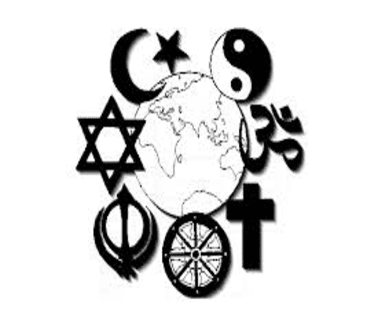There are 29 Constitution Bench matters, including five nine-judge Bench cases, pending in the Supreme Court which has decided 2,183 Constitution Bench cases since 1950
Pending Constitution Bench Cases
- Of these 29 cases, 18 are pending before five-judge Bench, six are pending before seven-judge Bench and five cases pending before nine-judge Bench for adjudication
- The oldest Constitutional Bench matter pending before the top court was more than three decades old titled Abhiram Singh versus CS Commachen (Dead) by LRs and Others which was registered in 1992
- Noting that adjudication and disposal of cases was within the exclusive domain of the judiciary and the Centre had no role in it, Meghwal said, “It cannot be said the reason for pendency of the Constitution Bench cases is the lack of interest in expediting the same.”
- The highest 956 Constitution Bench matters were disposed of during 1960-69, followed by 440 cases during 1950-59; 292 matters during 1970-79; 157 cases between 1990 and 1999; 138 cases during 2000-09; 71 cases during 2010-19 and only 19 such cases between 2020 and 2023.
What Is A Constitution Bench?
- A constitution bench is a bench consisting of five or more judges of the Supreme Court that is set up to decide a case based on the interpretation of the Constitution.
- In India, these benches are temporary and are dissolved once a legal question or issue is resolved.
- Generally, cases are heard by a bench with two or three judges, called a division bench.
- The constitution bench can be appointed by the Chief Justice of India.
When Is A Constitution Bench Formed?
- Article 143 of the Indian Constitution defines the conditions in which a constitution bench can be formed.
- Currently, there are four situations when such a bench can be formed.
- First, if a case involves a “substantial question of law” related to the interpretation of the Constitution.
- Second, a bench can be formed if the President seeks SC’s opinion on law or fact. In this case, however, the apex court’s decision is not binding on the President, and they can take a different point of view.
- Third, a constitution bench can be formed when a two-judge bench and later a three-judge bench deliver conflicting judgements on the same issue.
- Lastly, it can be formed if a three-judge bench delivers a judgement that is different from the judgement delivered by a previous three-judge bench on an issue.
- Largely, the constitution bench gives an overarching view on a question of law and defines a path the law will take in the future.
- In India, DY Chandrachud has been a part of 21 constitution benches, the highest in the country. He is followed by Justices AM Khanwilkar and Ashok Bhushan with 15 and 10 benches, respectively.
Key Articles Governing Constitution Bench Matters
Article 145 (1)
Subject to the provisions of any law made by Parliament the Supreme Court may from time to time, with the approval of the President, make rules for regulating generally the practice and procedure of the Court including

Article 145 (2)
- Rules made under this article may fix the minimum number of Judges who are to sit for any purpose, and may provide for the powers of single Judges and Division Courts
Article 145 (3)
- The minimum number of Judges who are to sit for the purpose of deciding any case involving a substantial question of law as to the interpretation of this Constitution or for the purpose of hearing any reference under Article 143 shall be five
Article 145 (4)
- No judgment shall be delivered by the Supreme Court save in open Court, and no report shall be made under Article 143 save in accordance with an opinion also delivered in open Court
Article 145 (5)
- Article 145(5) states that no judgment shall be delivered by the Supreme Court without the concurrence of a majority of the judges present at the hearing of the case, but nothing in this clause shall prevent a judge from delivering a dissenting judgment.
Supreme Court of India
- The Supreme Court of India is the highest judicial court and the final court of appeal under the Constitution of India, the highest constitutional court, with the power of judicial review.
- India is a federal State and has a single and unified judicial system with three tier structure, i.e., Supreme Court, High Courts and Subordinate Courts.
- The promulgation of Regulating Act of 1773 established the Supreme Court of Judicature at Calcutta as a Court of Record, with full power & authority.
- It was established to hear and determine all complaints for any crimes and also to entertain, hear and determine any suits or actions in Bengal, Bihar and Orissa.
- The Supreme Courts at Madras and Bombay were established by King George – III in 1800 and 1823 respectively.
- The India High Courts Act 1861 created High Courts for various provinces and abolished Supreme Courts at Calcutta, Madras and Bombay and also the Sadar Adalats in Presidency towns.
- These High Courts had the distinction of being the highest Courts for all cases till the creation of Federal Court of India under the Government of India Act 1935.
- The Federal Court had jurisdiction to solve disputes between provinces and federal states and hear appeal against Judgements from High Courts.
- After India attained independence in 1947, the Constitution of India came into being on 26 January 1950. The Supreme Court of India also came into existence and its first sitting was held on 28 January 1950
- The law declared by the Supreme Court is binding on all Courts within the territory of India
To Download Monthly Current Affairs PDF Click here
Get Inspiration from CLAT 2025 Topper
Click here to get a free demo
Everything About CLAT 2025



